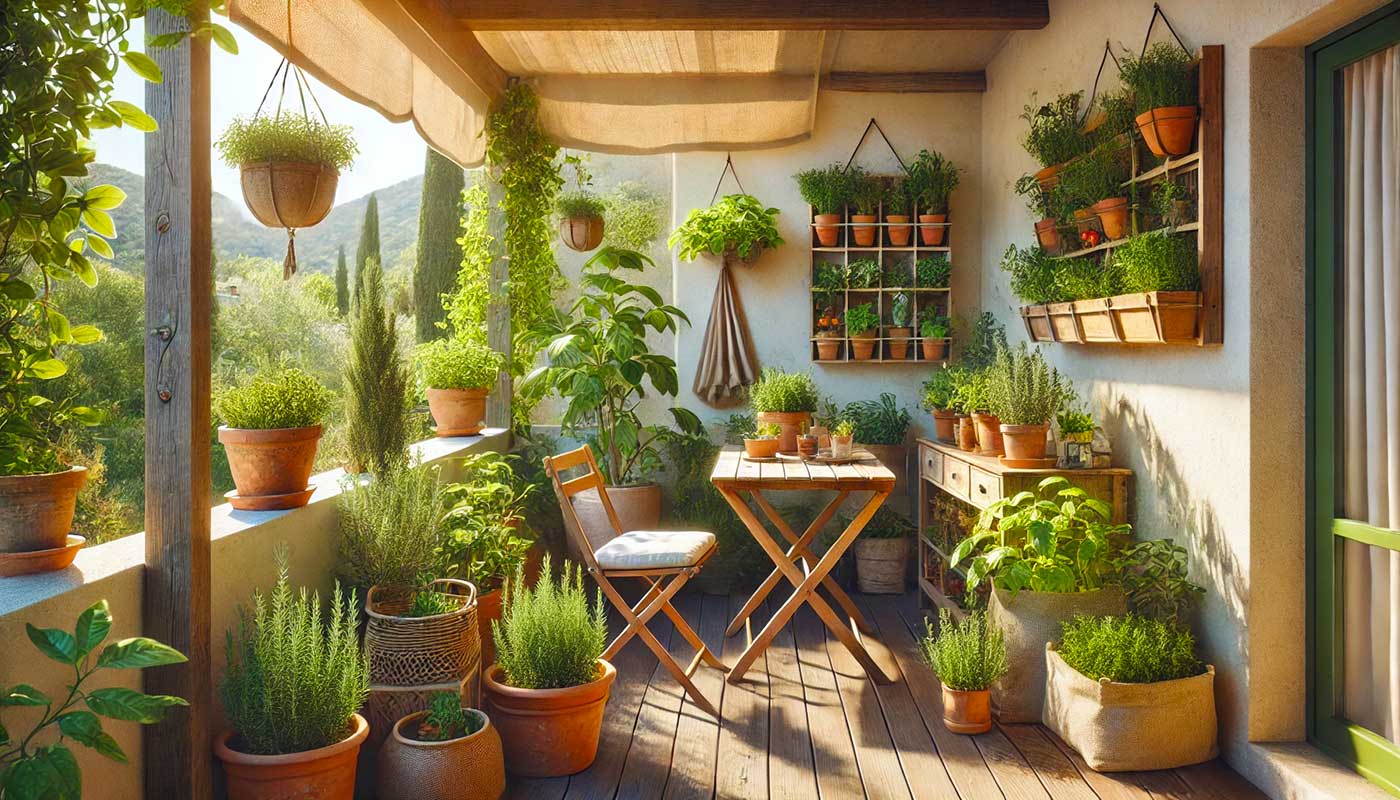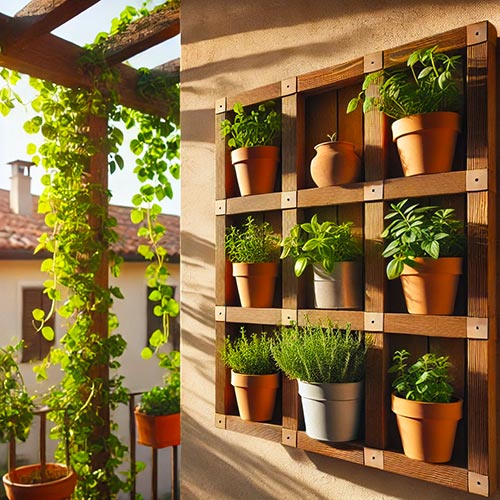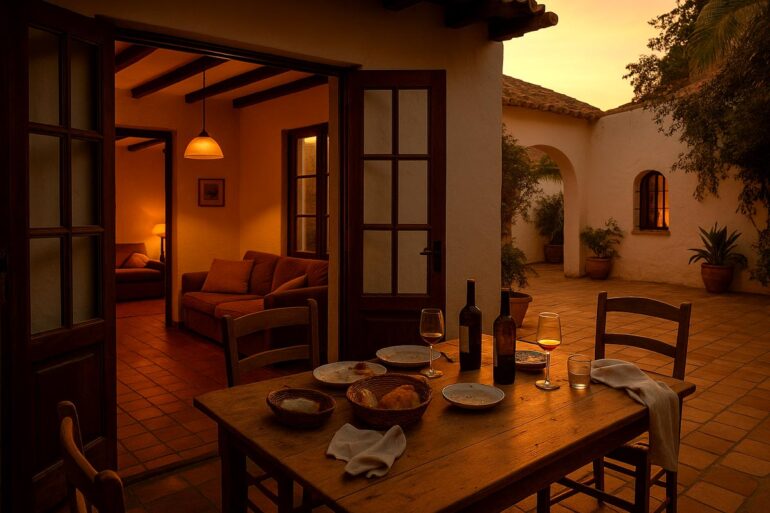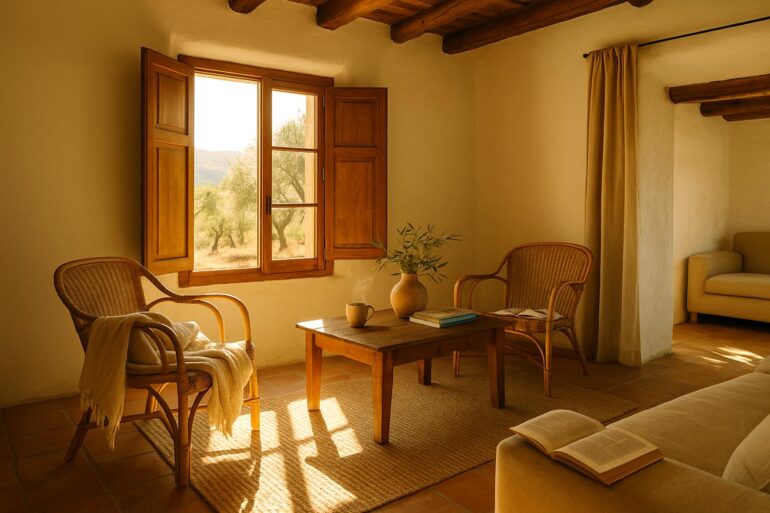Listeners:
Top listeners:
00:00
00:00
volume_up
chevron_left
-
 play_arrow
play_arrow
Costa Blanca Radio The Sound Of The Costa
-
 play_arrow
play_arrow
FeelGood Radio The Sound Of The Costa
music_note
Your own vegetable garden on the balcony or terrace: smart gardening in the Spanish climate

share
close
Living in Spain means lots of sun, long summers, and… dry soil. Not exactly the ideal conditions for starting a vegetable garden on your balcony or terrace, you might think. However, it’s possible to grow your own herbs and vegetables without having to water them every day or leave your plants burnt out. The trick is making smart choices: the right plants, the right pots, and most importantly, a strategy that works in the Spanish heat.
Why a vegetable garden in Spain is a good idea
Tomatoes are easy to grab at the supermarket, and basil at the market smells fresher than fresh, so why bother starting your own vegetable garden? Simple: because homegrown vegetables and herbs not only taste better, but are also much more practical. In Spain, much grows naturally, so why not take advantage of the climate?
A vegetable garden on your own balcony or terrace means:
- Always having fresh herbs and vegetables on hand, without extra trips to the store.
- More control over what you eat, without pesticides or excessive water usage.
- Sustainable and cost-effective, as you no longer need to buy plastic-wrapped herbs and vegetables.
But let’s be honest: a vegetable garden in Spain isn’t without its challenges. Without smart water management and the right setup, it can quickly turn into a dry wasteland.
 Smartly managing sun and heat
Smartly managing sun and heat
The Spanish sun is amazing—until your basil starts acting like crispy chips. In the Netherlands, you have to protect plants from too much rain; here, it’s all about preventing spontaneous sunburn.
- Choose your spot wisely. A south-facing balcony with no shade? You’d be better off growing cacti than lettuce. Look for a spot with morning sun and afternoon shade.
- Use height to your advantage. The further from the hot tiles, the better. A plant rack on the wall, hanging pots on the balcony railing—anything that keeps them away from the heat will help.
- Create shade. No permanent shaded area? Hang an old white sheet, set up a shade cloth, or place a parasol. Anything is better than burnt plants.
- Avoid black pots. They act like mini solar panels and cook your roots. White or terracotta pots stay cooler.
Which plants survive the Spanish sun?
Not everything can handle 30+ degrees, but these tough ones definitely can:
- Rosemary, thyme, and oregano – Mediterranean herbs that aren’t picky about water.
- Basil and mint – Delicious, but a bit of a diva when it comes to heat. Give them some shade.
- Tomatoes and peppers – They grow fast, as long as you give them water now and then.
- Zucchini and eggplant – They survive anything, except complete neglect.
- Peppers and chilies – The hotter, the better. They love the Spanish sun.
Watering without wasting.
In Spain, water evaporates faster than you can say olé, so water management is key.
- Water in the morning or evening. Watering in the middle of the day is just wasting water.
- Give them a water reserve. Place saucers under pots to ensure excess water doesn’t disappear right away.
- Add a layer of mulch to the soil. Straw, wood chips, or even a layer of coffee grounds—anything helps to retain moisture longer.
- Drip irrigation is your friend. Not in the mood to water every day with a can? A simple drip hose does the job for you. This YouTube video shows exactly how to make one yourself.
Thinking ahead pays off.
Want fresh basil with your pasta and juicy tomatoes without plastic packaging this summer? Start now. Your vegetable garden won’t wait for the perfect moment, and once it gets really hot, it’ll be too late.
With a little planning, you’ll soon enjoy a balcony full of greenery without ending up with dead plants and scorched remnants by mid-July.
Written by: Lucas Martínez
gardening in Spain growing herbs and vegetables heat-resistant plants mediterranean vegetable garden smart gardening sustainable garden vegetable garden on a balcony water conservation in the garden
Rate it
Similar posts
Search
Latest news

The art of cozy living: why Spaniards don’t need candles
Slow mornings: why starting your day slowly makes it better

Stews and stories: comfort food just like grandma used to make

Warmth without waste: how to keep your Spanish home comfortable

The scent of chestnuts: Spanish autumn dishes on the Costa
-
Recent Posts
- The art of cozy living: why Spaniards don’t need candles
- Slow mornings: why starting your day slowly makes it better
- Stews and stories: comfort food just like grandma used to make
- Warmth without waste: how to keep your Spanish home comfortable
- The scent of chestnuts: Spanish autumn dishes on the Costa
© 2025 The Sound Of The Costa; All Rights Reserved


